When I first heard about Grindhouse Releasing’s Bluray of The Swimmer, I had an inkling that Chris Innis‘s 150-minute “Story of The Swimmer” doc might be the most interesting aspect. Well, I watched it last night and can say without hesitation that it definitely is. (I’m not a huge fan of the film itself.) Innis has assembled a genuinely interesting account of the conflicted shooting and re-shooting of this 1968 effort. It’s the story of an intelligent, obviously ambitious project that was probably doomed to be a commercial failure from the get-go, and which still doesn’t work all that well. But in today’s context, it’s at least a respectable attempt to capture that spiritually corroded aura of the John Cheever realm (alcohol, affluence, New York-area suburbia) of the ’50s and ’60s.
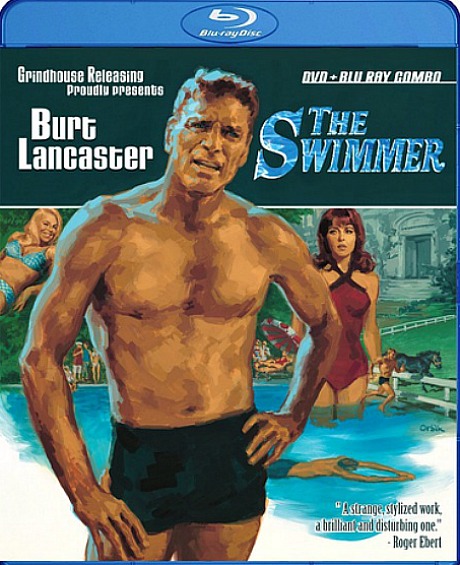
Innis, winner of an Oscar (with Bob Murawski) for her cutting of The Hurt Locker, has not made a masterwork here. In some ways it’s a little bit splotchy and piecemeal but it’s basically a solid, stand-up effort, no stone unturned. Especially considering that all the creative principals (Burt Lancaster, Frank and Eleanor Perry, Sam Spiegel, Janice Rule, Kim Hunter, Barbara Loden, Sydney Pollack, Elia Kazan, Marvin Hamlisch) are dead and gone.
Her talking heads are peripheral or secondary figures (assistant directors Michael Hertzberg and Ted Zachary, supporting actress Janet Landgard, bit players Joan Rivers and Marge Champion, swimming coach Bob Horn, and Lancaster’s daughter Joanna (who was only 14 and 15 at the time). She also uses 2010 interview footage of the Hamlisch talking about his musical-score contribution and the late editor Sidney Katz recounting his side of the tale.
Innis has delivered a warts-and-all portrait of a film that never quite figured itself out and went down swinging and confused and frustrated (only to be semi-rescued by revisionist 21st Century film writers who have praised The Swimmer for its eerie, Twilight Zone-ish, Stepford Wives quality). She has gone the extra mile in locating the best archival sources within reach (a letter written by Kazan about Spiegel is absolutely priceless) and telling a colorful, often sad tale with fascinating specificity.
What does Innis’s doc remind us of? No ambitious, first-rate film has ever been easy to make. Even the most successful ones are a grind and a pain. Creative conflict is not only inevitable but in many cases a trial-by-fire process that leads to improvement. There are always potholes and problems, fires to put out, egos to be soothed.
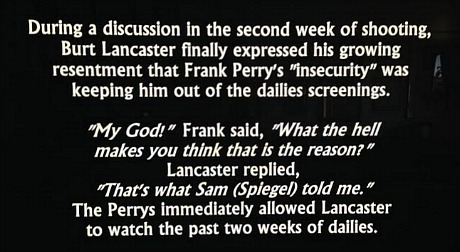
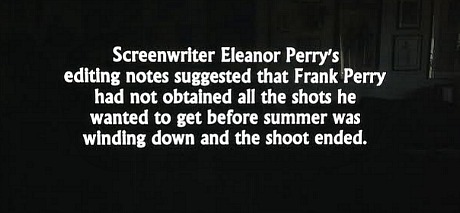
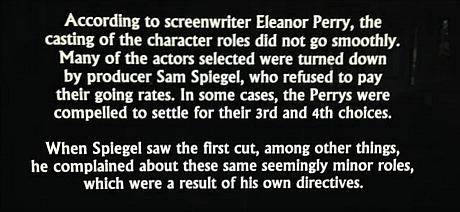
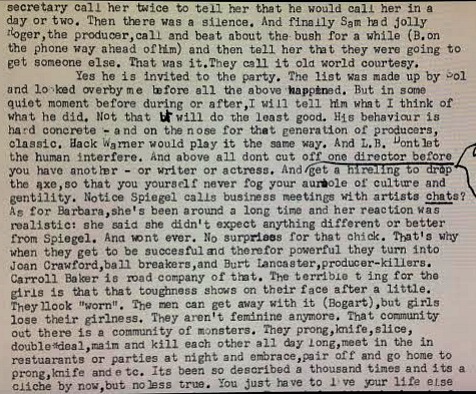
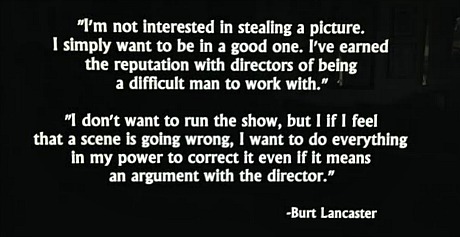

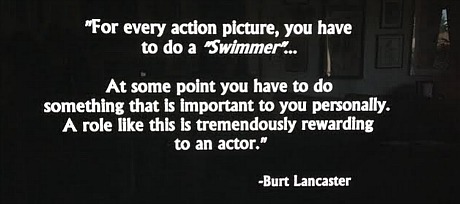
From my 1.23.14 piece: Grindhouse Releasing has a Bluray of Frank Perry and Burt Lancaster‘s The Swimmer (’68) streeting on 3.11. A strange, sterile adaptation of a John Cheever short story that appeared in The New Yorker in July 1964, The Swimmer is easy to admire but all but impossible to like. It has a decidedly cold and spooky vibe. It was shot in the summer of ’66 in Westport, Connecticut — just a town over from Wilton, the leafy hamlet where I was living and half-suffering at the time. I’ve only seen The Swimmer once, but not just because of my own associations — vaguely unhappy memories of failure at school, living under my parents’ rules and regulations, my father’s alcoholism. It’s also that corroded Cheever atmosphere.
Lancaster’s character, a tortured suburbanite who decides to swim across a string of swimming pools in Fairfield County on a journey to his home, is spirited but bluffing — you can tell there’s some kind of tragic history he’s suppressing or hiding from. Like Don Draper he’s all about presenting a “front”, but at least he’s open-hearted and flashing that Lancaster grin. And he looks terrific for a guy of 52 (Burt was born in 1913), wearing only a speedo and looking like a trim 35 year-old.
But with the exception of a blonde teenage girl (Janet Landgard) he befriends and roams around with, the people Lancaster runs into — his “friends” — are ghouls. Their fiendish manner and way of speaking is so curiously “off” that the film gives you a Stepford headache after a half-hour or so. I’ve always regarded The Swimmer as a kind of subtle horror film — a portrait of the stilted values of the World War II “striving class” generation and the alcoholic regimentation that seemed to define suburban affluence back then (similarly portrayed in Ang Lee‘s The Ice Storm and Sam Mendes‘ Revolutionary Road). But The Swimmer is too chilly and creepy — not just lacking in humanity but oxygen.
